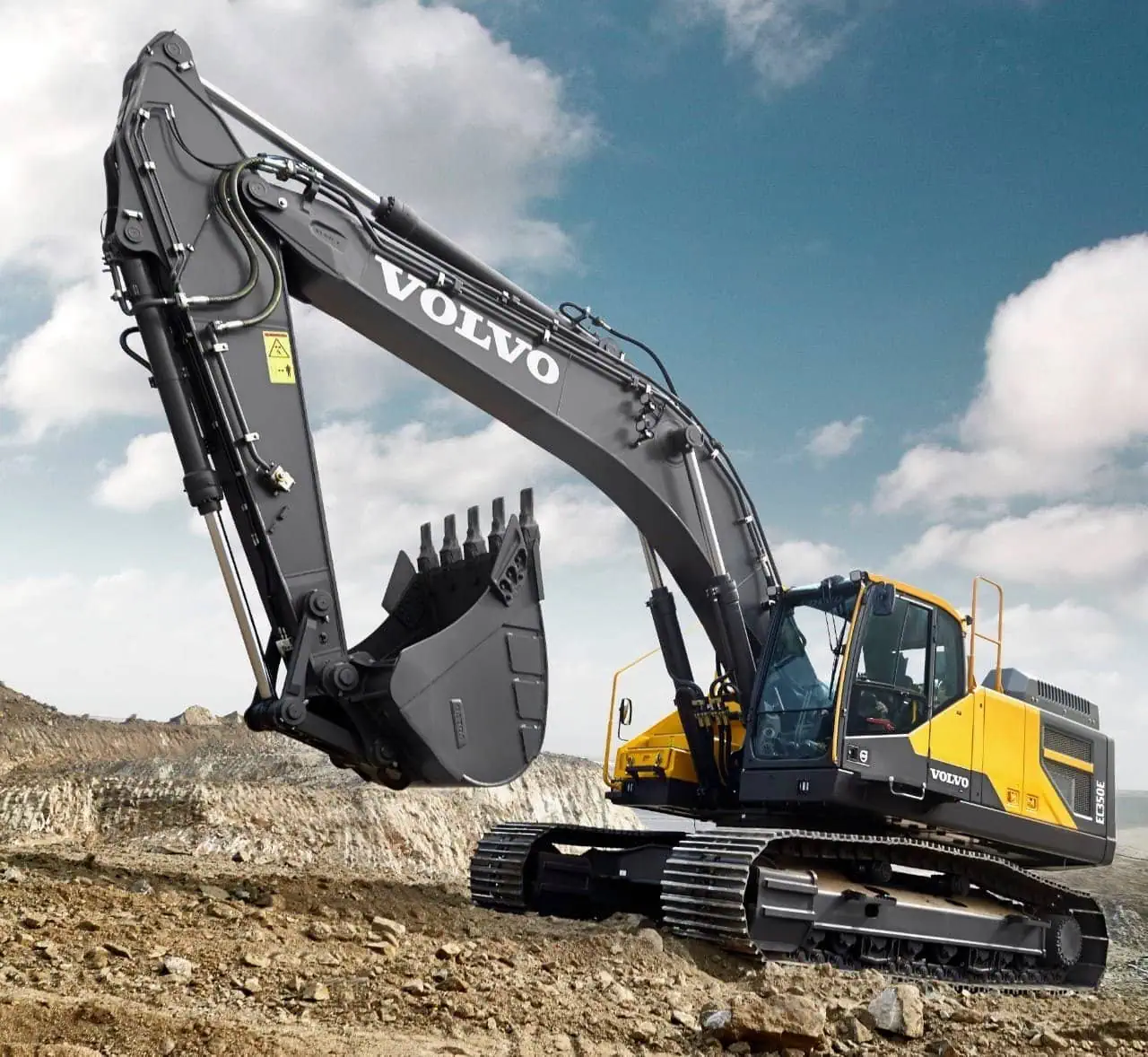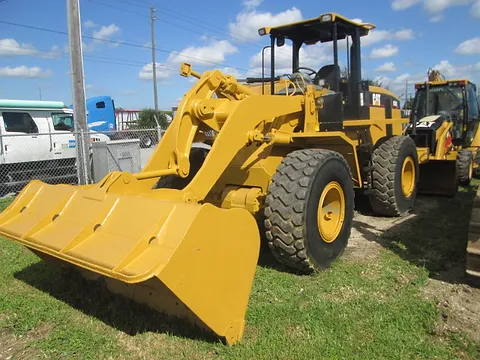Are you having problems starting your excavator? This might be a very unpleasant situation.
An excavator not starting because of various common reasons, including a dead battery, a defective starter, or problems with the fuel system. Checking these areas will frequently help you identify the issue and get your excavator running again.
When your excavator refuses to start, it can be a real pain. But don’t worry, I’ll go over the most common causes.

جدول المحتويات
تبديلIs a Dead Battery the Reason Your Excavator Not Starting?
Is your excavator refusing to roar to life? The first thing to check is the battery.
A dead or weak battery is a usual cause of excavators failing to start. Batteries can lose their charge over time, especially in cold conditions or if the excavator sits unused for extended periods. Checking the battery voltage and connections is a helpful first step in troubleshooting.
As an exporter of used excavators, I’ve seen this issue countless times. Here’s how to check the battery:
Battery Inspection Checklist:
- Check the battery voltage with a multimeter. A fully charged 12-volt battery should read around 12.6 volts.
- Examine the battery terminals for corrosion. Clean them with a wire brush if necessary.
- Ensure the battery cables are securely connected.
Remember that a healthy battery is essential for dependable excavator operation. Tony from Peru always stresses this when he inspects the used CAT320D excavators he purchases from us because he is aware that a good battery means less downtime and more productivity. If the battery voltage is low, try jump-starting the excavator with another vehicle or a battery charger. If it starts, let the excavator run for a while to recharge the battery.

Is There Something Wrong with the Starter?
Turn the key, but only hear a click? The starter might be the problem.
If you turn the key and hear a clicking sound but the engine doesn’t crank, the starter motor1 may be faulty. The starter is responsible for turning the engine over, and if it’s not working correctly, the excavator won’t start.
The starter is essential for getting the engine running. Here’s how to check it:
Starter Troubleshooting Steps:
- Check the starter motor for any visible damage.
- Ensure the wiring connections to the starter are clean and tight.
- Try tapping the starter with a hammer while someone turns the key. Sometimes, this can temporarily free a stuck starter motor.
If the starter still doesn’t engage, it may need to be replaced or rebuilt. As a used excavator exporter, I always advise my customers to check the starter condition before purchasing. A faulty starter can lead to unexpected downtime and repair costs. I remember one time when we were preparing a Komatsu excavator for shipment to South America. During the final inspection, we noticed the starter was weak. We replaced it with a refurbished unit, ensuring the excavator would start reliably upon arrival.

Is the Fuel Supply System Causing the Problem?
Could a fuel problem be stopping your excavator? It is possible.
Problems with the fuel supply2 system can also prevent an excavator from starting. This includes issues like a clogged fuel filter, a faulty fuel pump, or air in the fuel lines. Ensuring the fuel system is clean and functioning correctly is crucial for starting the excavator.
The fuel system delivers fuel to the engine. If there are problems, the excavator will not start.
Fuel System Checks:
- Check the fuel level in the tank. Running out of fuel is a common mistake.
- Inspect the fuel filter for clogs. Replace it if necessary.
- Bleed the fuel lines to remove any air.
A clean and properly functioning fuel system is essential for reliable excavator operation. I once had a customer in the Middle East who complained that his used Volvo excavator kept stalling. After some troubleshooting, we discovered the fuel filter was severely clogged with dirt and debris. Replacing the filter resolved the issue immediately. Always make sure to use high-quality fuel filters and replace them regularly to prevent fuel system problems.
Are There Issues with the Engine Itself?
Is the engine refusing to start no matter what you try? There may be engine problems.
Engine problems, such as low compression or faulty sensors, can also prevent an excavator from starting. These issues are more complex and often require professional diagnosis and repair. Regular engine maintenance can help prevent these problems.
If the basic checks don’t solve the problem, the engine might have deeper issues.
Engine Problem Diagnosis:
- Check the engine oil level and condition.
- Listen for any unusual noises when trying to start the engine.
- Consult a mechanic to check the engine compression and sensors.
Engine-related issues can be tricky to diagnose without specialized equipment. As an exporter, I’ve learned that regular maintenance is key to preventing these problems. Before shipping any excavator, we perform a thorough engine inspection, including checking the oil, coolant, and compression. This helps us ensure that the excavator will start reliably for our customers. Recently, we had a Doosan excavator that was showing signs of low compression. We had the engine rebuilt before shipping it, giving our customer peace of mind.

How To Troubleshoot An Excavator?
Do you want to find out what is wrong with the excavator by yourself? Follow these steps.
Troubleshooting an excavator involves systematically checking various components to identify the cause of the problem. Start with the simplest checks, such as the battery and fuel level, and then move on to more complex components like the starter and fuel pump. Consulting the excavator’s service manual can also be helpful.
Troubleshooting requires a step-by-step approach. Here are the steps I usually follow:
Excavator Troubleshooting Guide:
- Step 1: Battery Check: Ensure the battery is charged and the connections are clean.
- Step 2: Fuel System: Check the fuel level, fuel filter, and fuel lines.
- Step 3: Starter Motor: Inspect the starter for damage and proper connections.
- Step 4: Engine: Look for any visible engine damage or unusual noises.
As a used excavator exporter, I often get calls from customers needing help with troubleshooting. I always advise them to start with the basics and work their way up. I remember helping a customer in Africa who was having trouble with a Kubota excavator. After walking him through these steps, he discovered a loose connection on the starter motor. Tightening the connection solved the problem, saving him time and money.
What to Do When an Excavator Frequently Fails to Star
Does your excavator often refuse to start? It’s important to find out what’s wrong.
Frequent starting problems can be a sign of a bigger issue. Here’s what to do:
Addressing Frequent Starting Issues:
- Keep a record of when the excavator fails to start to identify patterns.
- Perform regular maintenance checks, including battery, fuel system, and starter inspections.
- Consider having a professional mechanic perform a diagnostic check.
Regular maintenance is crucial for preventing frequent starting problems.
How to Solve Excavator Problems?
Are you looking for solutions to your excavator problems? Here are some tips.
Solving excavator problems requires a combination of troubleshooting, maintenance, and repair. By identifying the cause of the problem and taking appropriate action, you can keep your excavator running smoothly and efficiently. Knowing when to seek professional help is also important.
Solving excavator problems involves more than just identifying the issue. It requires action.
Excavator Problem-Solving Tips:
- Follow the troubleshooting steps to identify the problem.
- Perform necessary repairs or replacements.
- Implement a regular maintenance schedule.
- Seek professional help when needed.
As an exporter, I’ve seen my share of excavator problems. The key is to address them promptly and effectively. I always tell my customers to invest in regular maintenance and repairs to avoid costly downtime

خاتمة
An excavator not starting can be due to several reasons. By systematically checking the battery, starter, fuel system, and engine, you can often identify and fix the problem.










